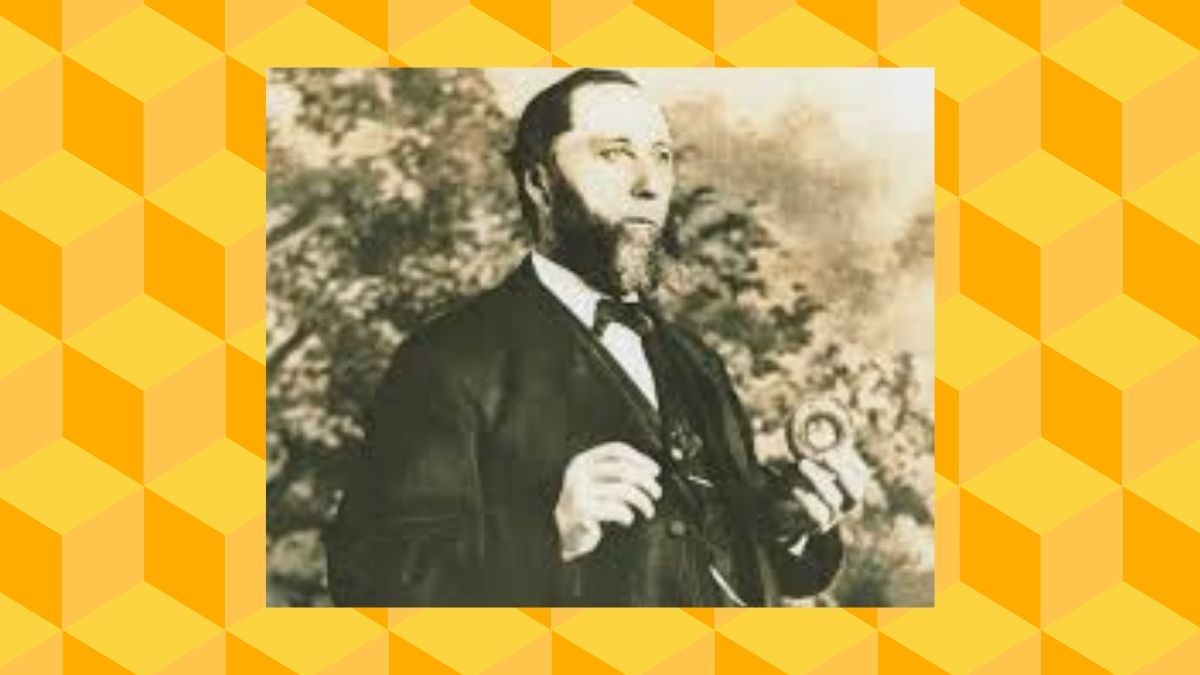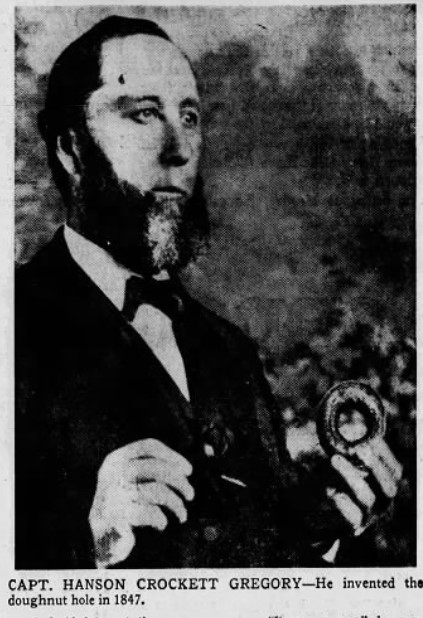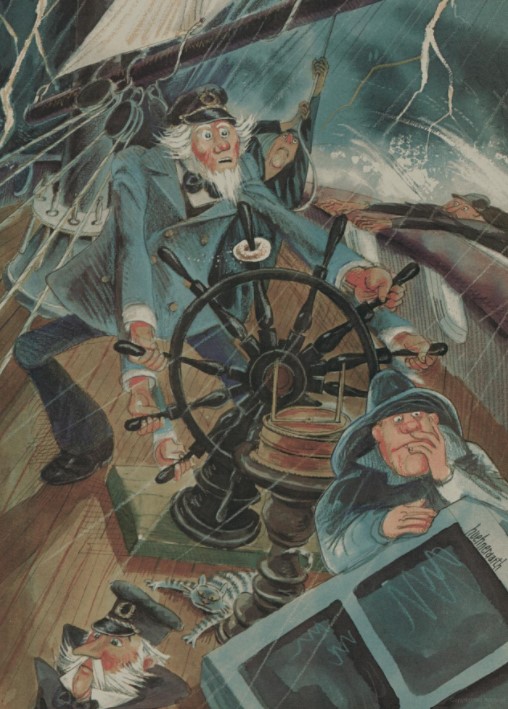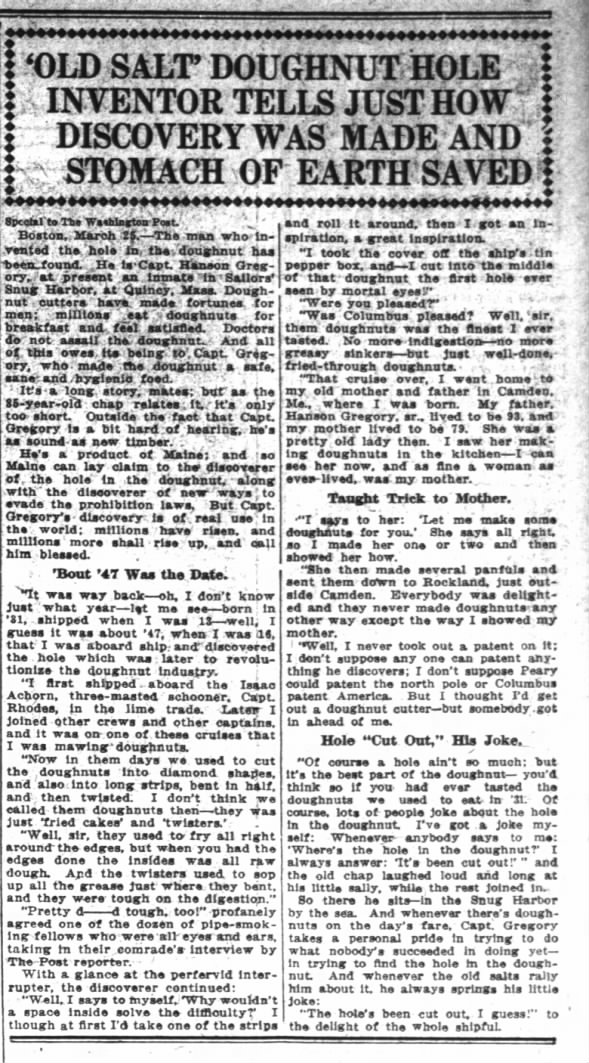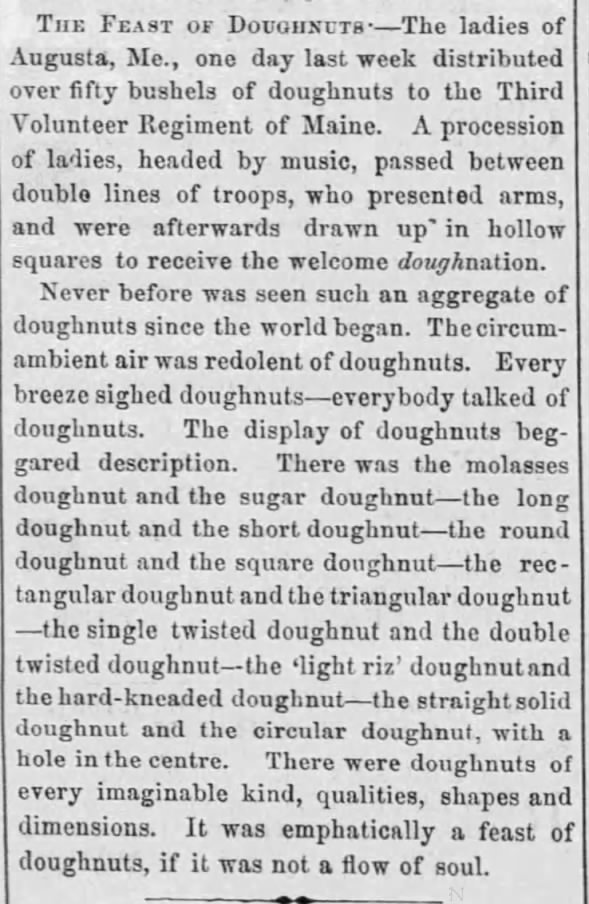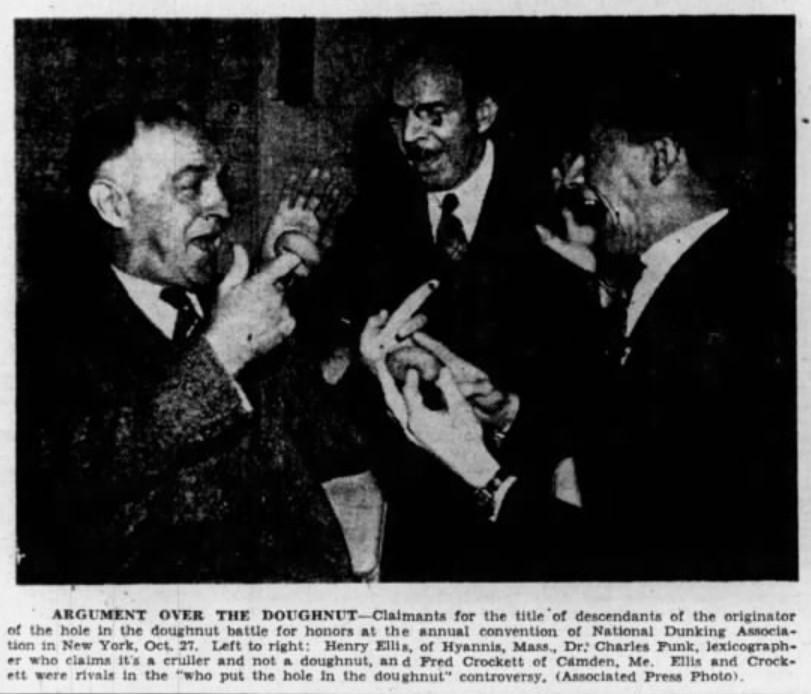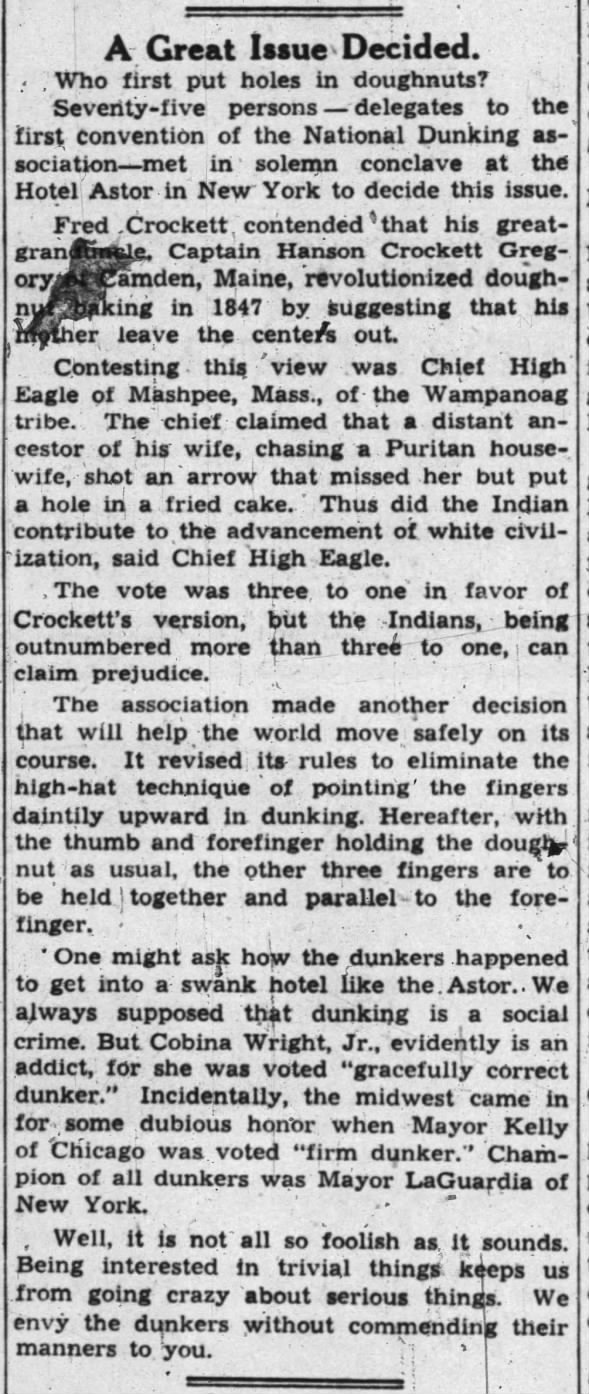Olykoeks, a predecessor to the doughnut that literally refers to an "oily cake," were brought to the United States by Dutch settlers in the 1600s. And while these balls of fried dough certainly had their share of fans (a woman named Anna Joralemon opened a successful Olykoek shop in New York in 1673), there was something missing about the round balls of fried dough. Or rather, there was something that wasn't missing: the hole.
At some point in history, some aspiring doughnut chef had an appetizing epiphany that would turn the olykoek into one of the world's most popular foods. But who discovered the doughnut hole? And when did they discover it? And why?
We can't definitively answer these questions, but we can take you down a doughnut hole and share the tale of a New England sea captain's doughnut hole discovery.
Captain Hanson Crockett Gregory is often credited with being the first person to put a hole in the center of a doughnut. But various stories about this discovery give varying reasons for Gregory's motivation. Our favorite version is this:
The Panicked Captain
Gregory was eating a doughnut made by his mother Elizabeth Gregory aboard his ship on a dark night in 1847, when a storm suddenly struck. Gregory, who abruptly needed the use of both his hands, impaled the doughnut on the handle of the ship's wheel and steered the boat to safety. If that's difficult to picture in your head, here's an illustration of the moment by John Huehnergarth that appeared in a 1980 issue of "Boy's Life":
Gregory realized that putting a hole in a doughnut made them way more convenient as they were easy to handle and could, in a pinch, be stored on his ship's wheel if necessary. We're skeptical, to say the least, of this version of the story.
The Penny Pinching Captain
Another version of this story holds that Captain Gregory started putting holes in the middle of his doughnuts as a cost-cutting measure. Our least favorite version of this story goes like this:
Gregory's mother, Elizabeth Gregory, made dozens of doughnut-like pastries for her son's voyages. Elizabeth realized that the center of the doughnut didn't cook as fast as the outer edges of the doughnut and that many of her cakes presented with somewhat raw dough in the middle. To solve this problem, Elizabeth started stuffing her doughnuts with fruits and nuts. A 1969 book of historical recipes describes Elizabeth Gregory's doughnuts:
Elias Gregory was a sea captain from Portland Maine. His mother, Elizabeth Gregory, was a famous local seafront cook and the originator of the doughnut. In 1803 throughout New England fried pastries such as fried cakes, Bismarcks, long johns, crullers and beignets were widely made. Mrs. Gregory made up a dough recipe for deep frying that was very original yet typical of her background. It contained nutmeg and cinnamon which she was familiar with as her son hauled these items as cargoe regularly on his ship. The recipe also contained lemon rind. Lemons were the most important thing in a ship's stores in those days as fresh lemons or limes kept the crew from getting scurvy and colds on long voyages.
Mrs. Gregory made the whole recipe with the idea of the pastry being one that could be taken aboard ship to sea and kept safely for long voyages without spoiling ... They were intended to be eaten by dunking them in hot black coffee or tea aboard ship. Mrs. Gregory put hazelnuts or walnuts in the center of the pastry as she was afraid that they might not cook all the way through in the center. She called the pastry, doughnuts, which was exactly what they were.
While Elizabeth Gregory may have been the cook in the family, it was her penny-pinching son, according to legend, who invented the hole. The book continues:
Gregory was a wise captain who knew the value of a penny. When he docked at Portland again he went straight to the tinsmith. He had him make a cutter in a circulate shape with a small hole in the center. He took the cutter to his mother and had her make up some doughnuts with the center out, eliminated the necessity of using expensive nuts in the center. They deep fried beautiful as, of course, the hole in the center prevented them from having a soggy center.
His crew down in the town taverns exulted the great goodness and medicinal qualities of doughnuts at sea and although on the next voyage the doughnuts had no nuts, they still were highly praised by the crew. Soon doughnuts were the most popular pastry throughout America and still are today.
There might be some truth to this story, but Captain Gregory himself told a different version to The Washington Post in 1916.
The (Probably) True Origins of the Doughnut Hole
The Washington Post got the "hole" truth from Gregory during an interview in 1916. Gregory, 85 years old at the time, said that he was the true inventor of the doughnut hole, but it was indigestion, not penny pinching, that inspired him.
Gregory said that the doughnuts his mother made were too oily and tough on digestion, so one night around 1847 he decided to cut the hole out of the center of the doughnut. With the center removed, the doughnuts were able to get an even fry, a discovery that, according to Gregory, was on par with Columbus' discovery of America. The ship captain said:
"It was back, oh, I don't know just what year, let me see, born in 31, shipped when I was 13, well, I guess it was about '47, when I was 16, that I was aboard ship and discovered the hole which was later to revolutionize the doughnut industry ... Now in them days we used to cut the doughnuts into diamond shapes, and also into long strips, bent in half, and then twisted. I don't think we called them doughnuts then - they was just 'fried cakes' and 'twisters.' Well sir, they used to fry all right around the edges, but when you had the edges done the insides was all raw dough. And the twisters used to sop up all the grease just where they bent, and they were tough on the digestion ... Well, I saws to myself, why wouldn't a space inside solve the difficulty?' I thought at first I'd take one of the strips and roll it around, then I got an inspiration, a great inspiration. I took the cover off the ship's tin pepper box and I cut into the middle of that doughnut the first hole ever seen by mortal eyes!"
"Were you pleased?"
"Was Columbus pleased? Well, sir, them doughnuts was the finest I ever tasted. No more indigestion - no more greasy sinkers - but just well-done fried-through doughnuts."
Gregory took his invention to his mother who started cutting holes into her doughnuts. And, well, the rest is history.
The Story Fits the Timeline
We haven't been able to definitively prove Gregory's tale, but we can say that it does match up with the timeline of the doughnut's evolution. We searched through archival news articles and found several mentions of the words "doughnut" and "donut" during the early 1800s, but none of these articles described a doughnut with a hole in the middle. The earliest mention of doughnut holes that we could find comes from 1861, a few years after Gregory's alleged discovery:
An Official Ruling
In 1941, the National Dunkers Association met at the Astor Hotel in New York to settle the debate about who truly invented the doughnut hole. Two stories were considered. The first held that a Native American accidentally invented the doughnut hole when they shot an arrow through a fried cake. The second was the above-displayed story from Captain Gregory. Gregory's version won two thirds of the vote.
